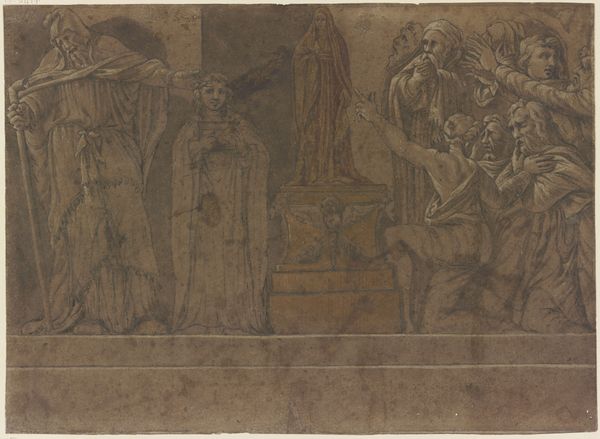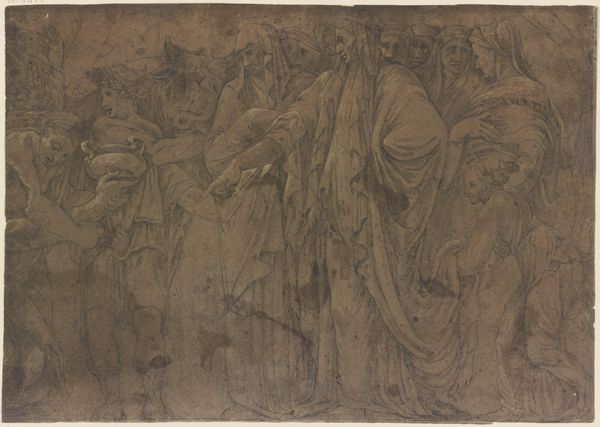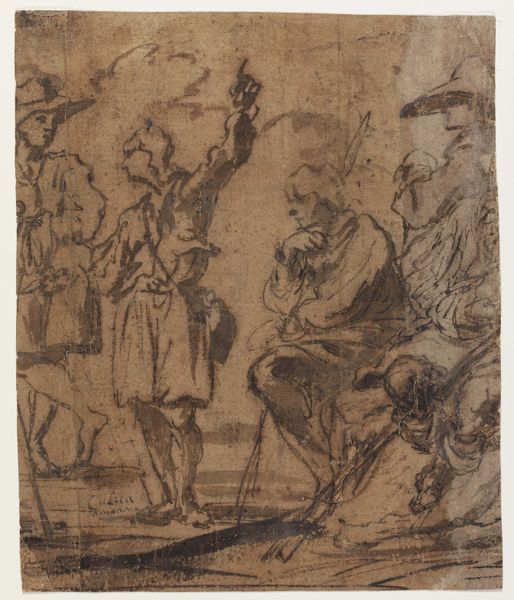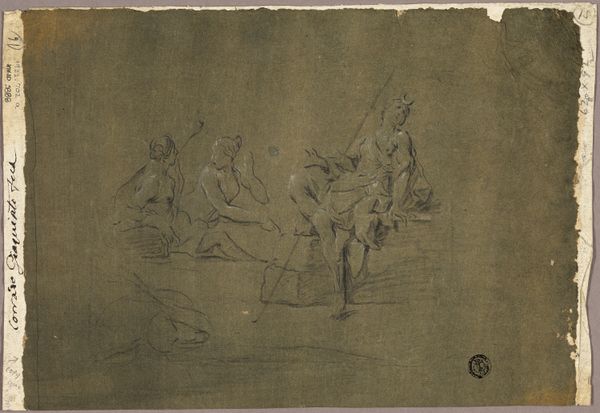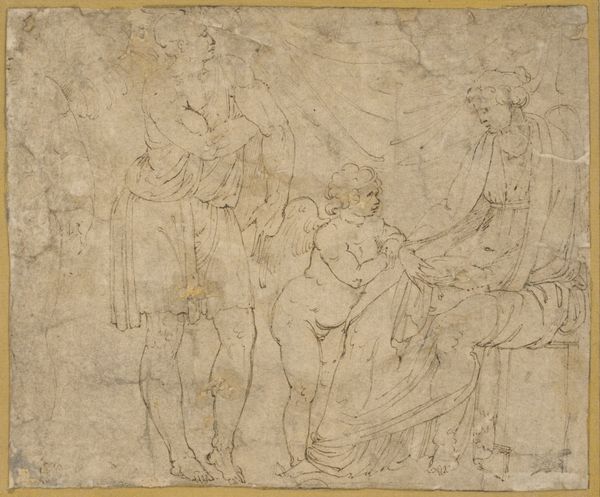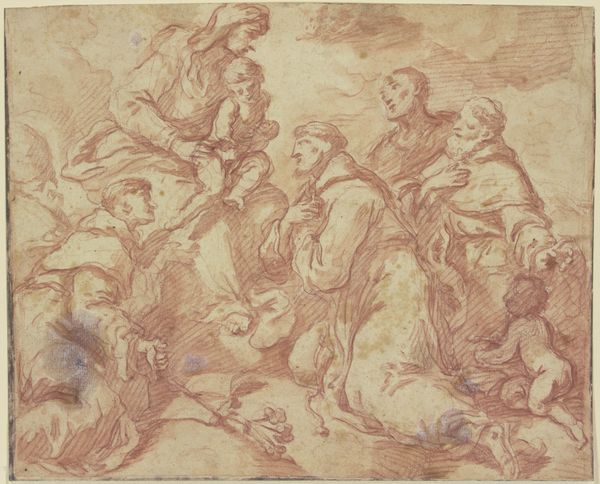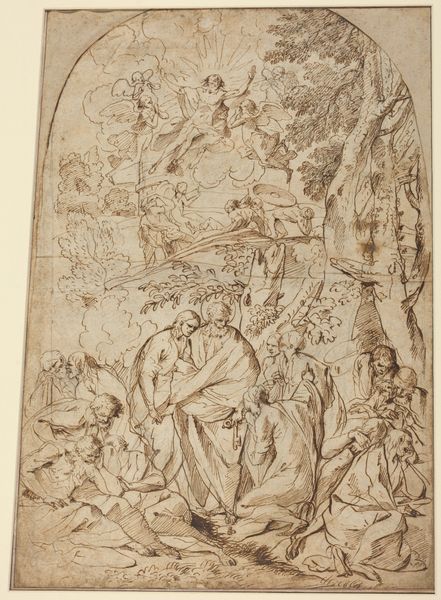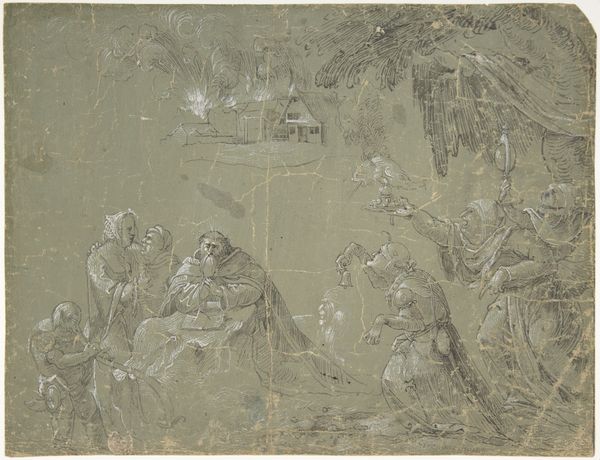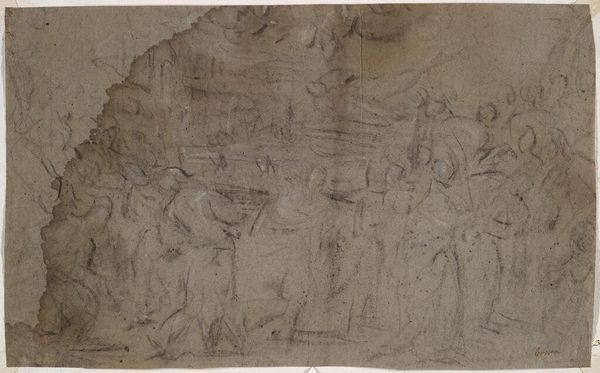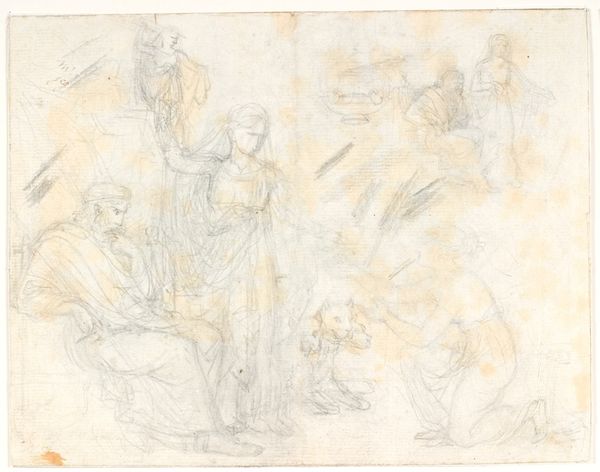![Studie af Simo, Sosie og slaverne, i billedet med disse figurer. [Simo betror sig til Sosia] by Nicolai Abildgaard](/_next/image?url=https%3A%2F%2Fd2w8kbdekdi1gv.cloudfront.net%2FeyJidWNrZXQiOiAiYXJ0ZXJhLWltYWdlcy1idWNrZXQiLCAia2V5IjogImFydHdvcmtzL2Y5YzNkOTEyLThjOGEtNDA0Zi04NzQyLThkOTVkN2ZhODZiNS9mOWMzZDkxMi04YzhhLTQwNGYtODc0Mi04ZDk1ZDdmYTg2YjVfZnVsbC5qcGciLCAiZWRpdHMiOiB7InJlc2l6ZSI6IHsid2lkdGgiOiAxOTIwLCAiaGVpZ2h0IjogMTkyMCwgImZpdCI6ICJpbnNpZGUifX19&w=3840&q=75)
Studie af Simo, Sosie og slaverne, i billedet med disse figurer. [Simo betror sig til Sosia] 1743 - 1809
0:00
0:00
Dimensions: 286 mm (height) x 357 mm (width) (bladmaal)
Curator: Looking at Nicolai Abildgaard's pen and ink drawing, created between 1743 and 1809, titled "Studie af Simo, Sosie og slaverne, i billedet med disse figurer. [Simo betror sig til Sosia]", you’re immediately struck by a sense of profound unease, wouldn't you say? Editor: Yes, an immediate emotional chill. There's an atmosphere of burden and secrecy suggested in the brown wash and the almost frantic linework depicting a cluster of figures, most burdened, in dialogue with one seemingly regal in his posture. Curator: Abildgaard’s dramatic use of line certainly captures that. He was a key figure in the Danish neoclassical movement, though this piece anticipates Romanticism in its raw emotionality. This is a study connected with classical drama. Specifically, it suggests a scene from Plautus' play "Andria." Simo is confiding in Sosia. Note that such scenes from Plautus often center on complex social dynamics and power structures in Roman society. Editor: The loaded postures! The stooped bodies—practically a symbol for oppressed labor. And then, the single figure set apart...Is that supposed to be Simo? He looms, seemingly detached. I would guess the robes symbolize authority and a distancing from the toils of others, yes? Curator: Quite astute! The slaves’ entanglement visualizes their predicament—caught in a web of obligations and physical constraints. And Simo embodies the patriarchal figure, a cultural type who controls not only labor but also discourse—as indicated by the image caption suggesting a confessional moment. Note also that in performance such confessions might function for comedic as well as for dramatic effect. Editor: This feels like a piece laden with critique—almost theatrical in its exaggeration of suffering versus indifference. Considering it was made during a time of significant social upheaval in Europe, did this visual language serve to reflect the broader sentiments on societal imbalances of the late 18th century? Curator: Undoubtedly! Visual choices like Abildgaard’s here tapped into deep cultural anxieties concerning social justice, hierarchy, and personal freedom that informed much political discourse of his time. It uses the distant past to comment on present ills, which, of course, opens it to be read, and even used, as a symbolic tool for thinking about those imbalances across historical contexts. Editor: Indeed. In retrospect, this has made me look closer not just at the figures themselves but at the charged space between them—spaces defined by power, whispered secrets, and unheard burdens. It underscores how social and political narratives can reside in seemingly simple strokes of pen on paper.
Comments
No comments
Be the first to comment and join the conversation on the ultimate creative platform.
